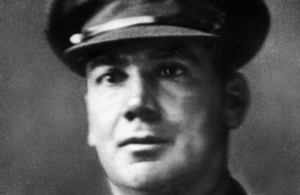WW1 Australian VC recipient George Mawby (Morby) Ingram
The story of Australian First World War Victoria Cross recipient George Mawby (Morby) Ingram.

George Mawby (Morby) Ingram [Credit: Australian War Memorial J03067]
66 men from Australia received the Victoria Cross, Britain’s highest award for gallantry, during the First World War. As part of the Centenary Commemorations the people of the United Kingdom marked their gratitude to those courageous men by presenting a bronze memorial plaque to their home country engraved with their names. The plaque is now displayed at the Australian War Memorial. This archive tells their stories.
Name: George Mawby (Morby) Ingram
DOB: 18 March 1889
Place of Birth: Bendigo, Victoria, Australia
Date of Action: 5 October 1918
Place of Action: Montbrehain, France
Rank: Lieutenant
Regiment: 24th Battalion, Australian Imperial Force
George Mawby (Morby) Ingram was born on 18 March 1889 in Victoria, Australia. He worked as a carpenter before enlisting, on the outbreak of the First World War, with the Australian Naval and Military Expeditionary Force and served in New Guinea. He later enlisted in the Australian Imperial Force and joined the 24th Battalion in France in early 1917 where he was awarded the Military Medal two months later.
Lieutenant Ingram was awarded the Victoria Cross for most conspicuous bravery and initiative at Montbrehain in France on 5 October 1918. His citation explains:
When early in the advance his platoon was held up by a strong point, Lt. Ingram, without hesitation, dashed out and rushed the post at the head of his men, capturing nine machine guns and killing 42 enemy after stubborn resistance. Later, when the company had suffered severe casualties from enemy posts, and many leaders had fallen, he at once took control of the situation, rallied his men under intense fire, and led them forward. He himself rushed the first post, shot six of the enemy, and captured a machine gun, thus overcoming serious resistance. On two subsequent occasions he again displayed great dash and resource in the capture of enemy posts inflicting many casualties and taking 62 prisoners. Throughout the whole day he showed the most inspiring example of courage and leadership, and freely exposed himself regardless of danger.
After the war, Ingram returned to Victoria, and worked as a foreman for a building contractors. He served with the Royal Australian Engineers during the Second World War and died in 1961.